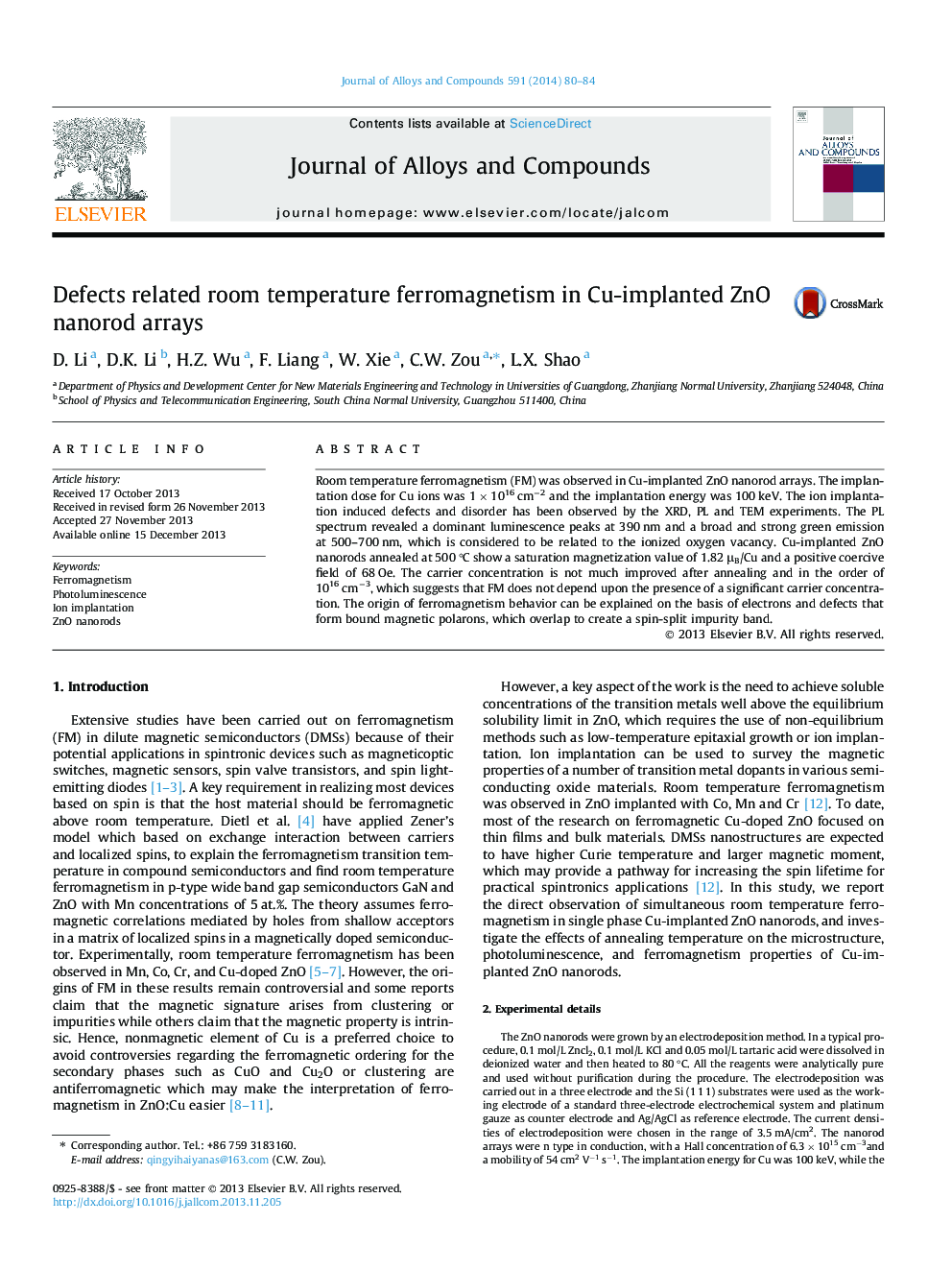| Article ID | Journal | Published Year | Pages | File Type |
|---|---|---|---|---|
| 1611815 | Journal of Alloys and Compounds | 2014 | 5 Pages |
•Room temperature ferromagnetism was observed in Cu-implanted ZnO nanorod arrays.•Cu-implanted ZnO nanorods show a saturation magnetization value of 1.82 μB/Cu.•The origin of ferromagnetism can be explained by the defects related bound magnetic polarons.
Room temperature ferromagnetism (FM) was observed in Cu-implanted ZnO nanorod arrays. The implantation dose for Cu ions was 1 × 1016 cm−2 and the implantation energy was 100 keV. The ion implantation induced defects and disorder has been observed by the XRD, PL and TEM experiments. The PL spectrum revealed a dominant luminescence peaks at 390 nm and a broad and strong green emission at 500–700 nm, which is considered to be related to the ionized oxygen vacancy. Cu-implanted ZnO nanorods annealed at 500 °C show a saturation magnetization value of 1.82 μB/Cu and a positive coercive field of 68 Oe. The carrier concentration is not much improved after annealing and in the order of 1016 cm−3, which suggests that FM does not depend upon the presence of a significant carrier concentration. The origin of ferromagnetism behavior can be explained on the basis of electrons and defects that form bound magnetic polarons, which overlap to create a spin-split impurity band.
